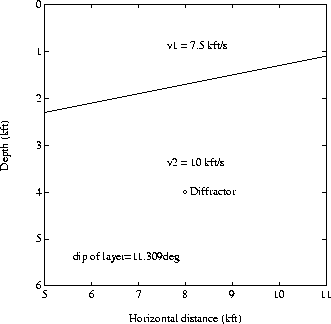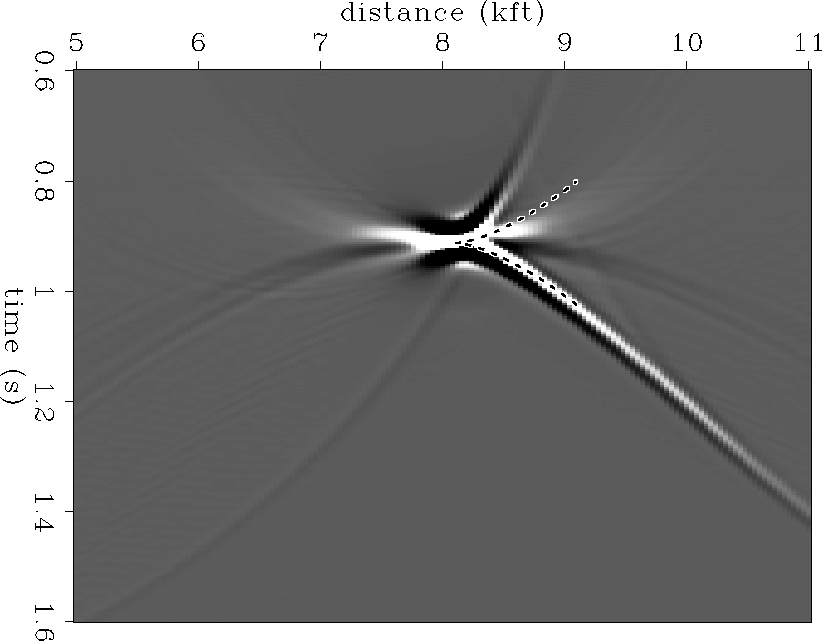




Next: Observed Effect of Migration
Up: VARIATION OF MIGRATION VELOCITY
Previous: VARIATION OF MIGRATION VELOCITY
The model used in this paper is the same as that used in
Paper 1 (Figure 1).
An implicit velocity gradient is caused by the dipping-layer since the
velocity changes across it.
The plume response due to a point diffractor
positioned at a depth of 4 kft at a horizontal position of 8 kft is
displayed in Figure 2. This is the Kirchhoff modeling and
migration result discussed in Paper 1. The migration velocity is the
vertical RMS well velocity of 8.84 kft/s that would be obtained along
a well drilled straight down into the diffractor from the surface.
The first-order theory derived by Black and Brzostowski 1993 and
reviewed in Paper 1 predicts that the plume shape is given by:
|  |
(1) |
|  |
(2) |
where xk and tk are the spatial and temporal coordinates of the time
migrated points and  is the propagation angle.
This is the symmetric curve overlaid on the migration result of
Figure 2. As discussed in Paper 1, this theoretical curve
accounts for some of the features of the plume but lacks the
higher-order terms which account for plume asymmetry.
gem1
is the propagation angle.
This is the symmetric curve overlaid on the migration result of
Figure 2. As discussed in Paper 1, this theoretical curve
accounts for some of the features of the plume but lacks the
higher-order terms which account for plume asymmetry.
gem1
Figure 1 Dipping-layer model. The change in velocity across the dipping layer
causes an implicit velocity gradient which depends on the dip of the layer.
 analytic
analytic
Figure 2 Comparison of the analytic expression for the plume to the
Kirchhoff migration result.










Next: Observed Effect of Migration
Up: VARIATION OF MIGRATION VELOCITY
Previous: VARIATION OF MIGRATION VELOCITY
Stanford Exploration Project
11/17/1997

